Reservoir Conservation in a Micro-Watershed in Tigray, Ethiopian Highlands
Abstract
:1. Introduction
2. Materials and Methods
2.1. Study Site
2.2. Storage Water and Sediment Volume Determination
2.3. Water Balance Estimation
2.4. Farmland Reclamation
3. Results
3.1. Reservoir Storage and Sediment Volume
3.2. Reservoir Water Balance
3.3. Farmland Reclamation
4. Discussion
5. Conclusions
Author Contributions
Funding
Acknowledgments
Conflicts of Interest
References
- The World Bank. Data Bank, World Development Indicators. Available online: http://databank.worldbank.org/data/reports.aspx? source=2&country=ETH (accessed on 1 December 2018).
- Haregeweyn, N.; Melesse, B.; Tsunekawa, A.; Tsubo, M.; Meshesha, D.; Balana, B. Reservoir sedimentation and its mitigating strategies: A case study of Angereb reservoir (NW Ethiopia). J. Soils Sediments 2012, 12, 291–305. [Google Scholar] [CrossRef]
- Tamene, L.; Park, S.; Dikau, R.; Vlek, P. Analysis of factors determining sediment yield variability in the highlands of northern Ethiopia. Geomorphology 2006, 76, 76–91. [Google Scholar] [CrossRef]
- Tamene, L.; Park, S.; Dikau, R.; Vlek, P. Reservoir siltation in the semi-arid highlands of northern Ethiopia: Sediment yield-catchment area relationship and a semi-quantitative approach for predicting sediment yield. Earth Surf. Process. Landf. 2006, 31, 1364–1383. [Google Scholar] [CrossRef]
- Tamene, L.; Abegaz, A.; Aynekulu, E.; Woldearegay, K.; Vlek, P. Estimating sediment yield risk of reservoirs in northern Ethiopia using expert knowledge and semi-quantitative approaches. Lakes Reserv. Res. Manag. 2011, 16, 293–305. [Google Scholar] [CrossRef]
- Berhane, G.; Gebreyohannes, T.; Martens, K.; Walraevens, K. Overview of micro-dam reservoirs (MDR) in Tigray (northern Ethiopia): Challenges and benefits. J. Afr. Earth Sci. 2016, 123, 210–222. [Google Scholar] [CrossRef]
- Dejenie, T.; Asmelash, T.; Meester, L.; Mulugeta, A.; Gebrekidan, A.; Risch, S.; Pals, A.; Gucht, K.; Vyverman, W.; Nyssen, J.; et al. Limnological and ecological characteristics of tropical highland reservoirs in Tigray, northern Ethiopia. Hydrobiologia 2008, 610, 193–209. [Google Scholar] [CrossRef]
- Berhane, G.; Martens, K.; Nawal, F.; Walraevens, K. Water leakage investigation of micro-dam reservoirs in Mesozoic sedimentary sequences in northern Ethiopia. J. Afr. Earth Sci. 2013, 79, 98–110. [Google Scholar] [CrossRef]
- Mekonnen, K.; Keesstra, S.; Baartman, J.; Ritsema, C.; Melesse, A. Evaluating sediment storage dams: Structural off-site sediment trapping measures in northwest Ethiopia. CIG 2015, 41, 7–22. [Google Scholar] [CrossRef]
- Teka, D.; van Wesemael, B.; Vanacker, V.; Poesen, J.; Hallet, V.; Taye, G.; Deckers, J.; Haregeweyn, N. Evaluating the performance of reservoirs in semi-arid catchments of Tigray: Tradeoff between water harvesting and soil and water conservation. J. Catena 2013, 110, 146–154. [Google Scholar] [CrossRef]
- Girmay, G.; Mitiku, H.; Singh, B. Agronomic and economic performance of reservoir sediment for rehabilitating degraded soils in northern Ethiopia. Nutr. Cycl. Agroecosyst. 2009, 84, 23–38. [Google Scholar] [CrossRef]
- Girmay, G.; Nyssen, J.; Poesen, J.; Bauer, H.; Merckx, R.; Haile, M.; Deckers, J. Land reclamation using reservoir sediments in Tigray, northern Ethiopia. Soil Use Manag. 2012, 28, 113–119. [Google Scholar] [CrossRef]
- Rabia, A.; Afifi, R.; Gelaw, A.; Bianchi, S.; Figueredo, H.; Huong, T.; Lopez, A.; Mandala, S.; Matta, E.; Ronchi, M.; et al. Soil mapping and classification: A case study in the Tigray region, Ethiopia. J. Agric. Environ. Int. Dev. 2013, 107, 73–99. [Google Scholar]
- Ichikawa, M. River survey. In Natural Geographical Survey Method, 1st ed.; Birukawa, S., Ed.; Asakura Publishing Co. Ltd.: Tokyo, Japan, 1973; p. 327. [Google Scholar]
- Hokkaido Government Okhotsk General Sub-Prefectural Bureau. Small Knowledge of Farming Water. Available online: http://www.okhotsk.pref.hokkaido.lg.jp/ss/cks/einou-mame.htm (accessed on 1 December 2018).
- Koda, K.; Girmay, G.; Berihu, T. Constructability criteria for reclaiming farmland by using reservoir sediments. In Climate Smart Agriculture-Enhancing Resilient Agricultural Systems, Landscapes and Livelihoods in Ethiopia and Beyond, 1st ed.; Caryn, D., Ed.; World Agroforestry, Oregon State University and JIRCAS: Corvallis, OR, USA; Tsukuba, Japan, 2019; in press. [Google Scholar]
- Vallet-Coulomb, C.; Legesse, D.; Gasse, F.; Travi, Y.; Chernet, T. Lake evaporation estimates in tropical Africa (Lake Ziway, Ethiopia). J. Hydrol. 2001, 245, 1–18. [Google Scholar] [CrossRef]
- Tsujimura, M. Basic hydrology. In Physical Geography, 1st ed.; Matsuyama, H., Ed.; Minerva Co. Ltd.: Kyoto, Japan, 2014; p. 135. [Google Scholar]
- Miyazaki, Y.; Onishi, S. Discussion on reservoir sedimentation changes and specific sedimentation. J. Jpn. Soc. Civ. Eng. 1994, 497, 81–90. [Google Scholar]
- Born, S.; Smith, S.; Stephenson, D. Hydrogeology of glacial-terrain lakes, with management and planning applications. J. Hydrol. 1979, 43, 7–43. [Google Scholar] [CrossRef]
- Frances, W. Landforms, monuments and hidden churches of Tigray. In Understanding Ethiopia: Geology and Scenery, 1st ed.; Springer: Berlin, Germany, 2016; p. 84. [Google Scholar]
- Haregeweyn, N.; Poesen, J.; Nyssen, J.; de Wit, J.; Haile, M.; Govers, G.; Deckers, S. Reservoirs (MDR) in Tigray (northern Ethiopia): Characteristics and sediment deposition problems. Land Degrad. Dev. 2006, 17, 211–230. [Google Scholar] [CrossRef]
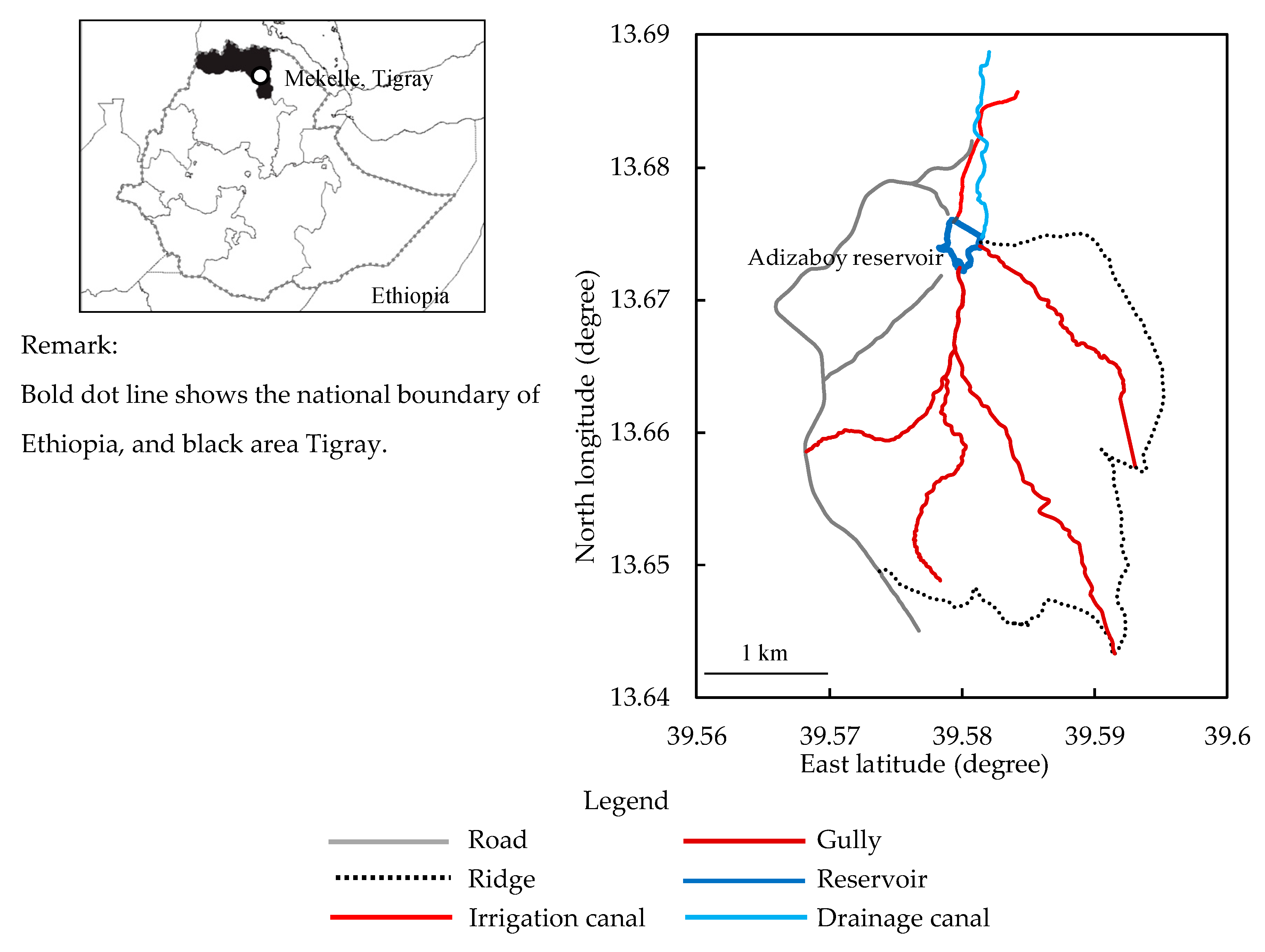
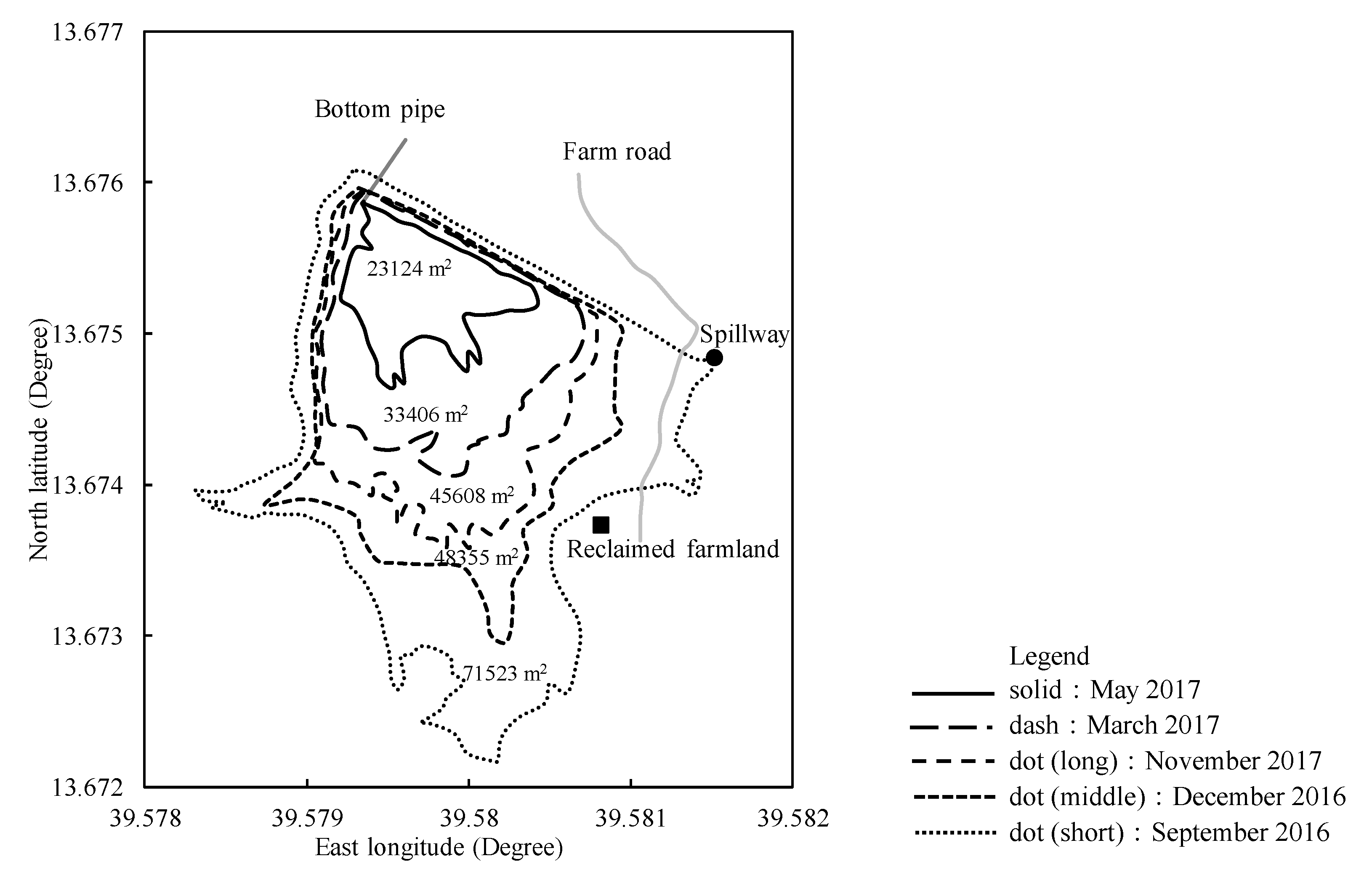
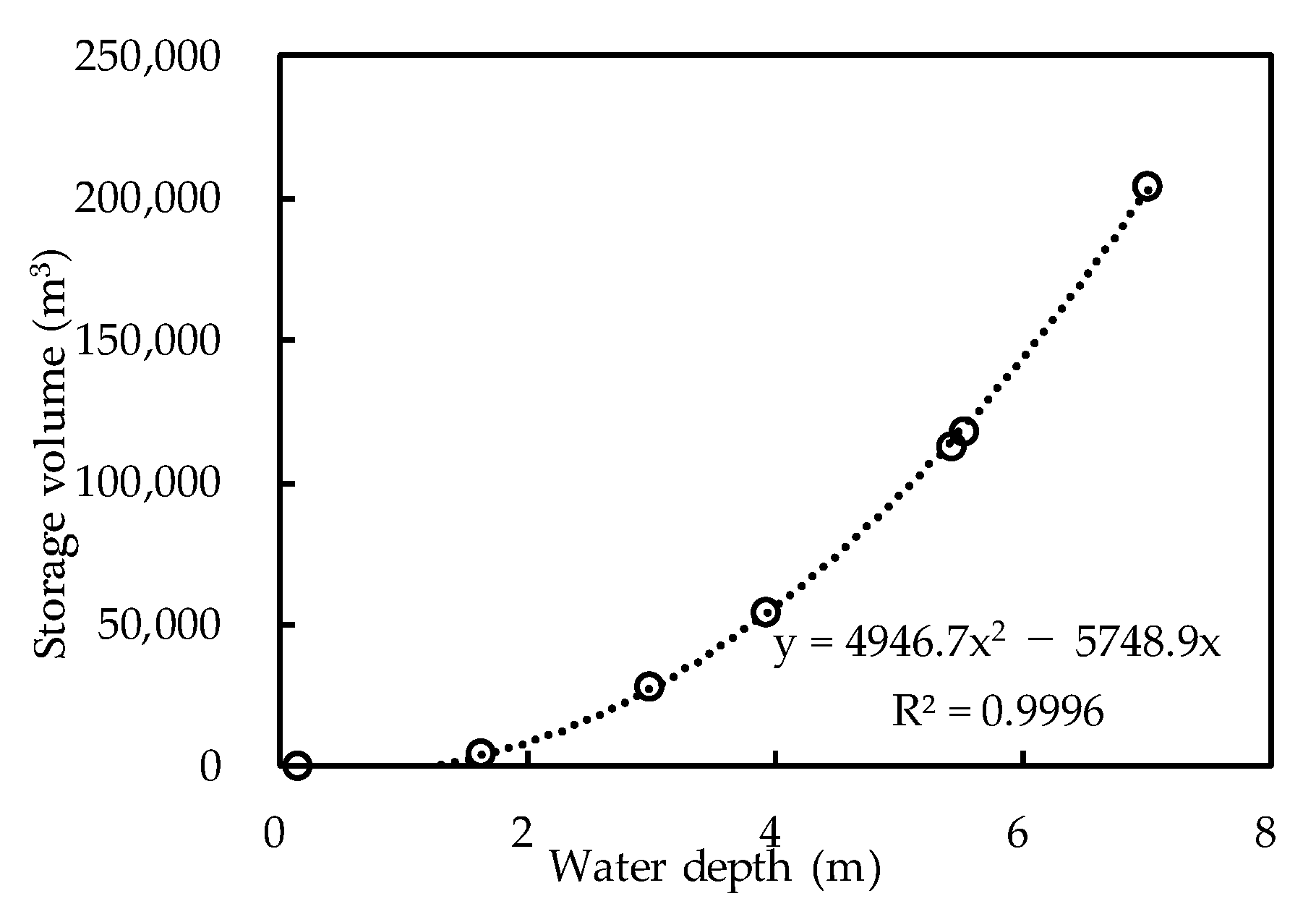

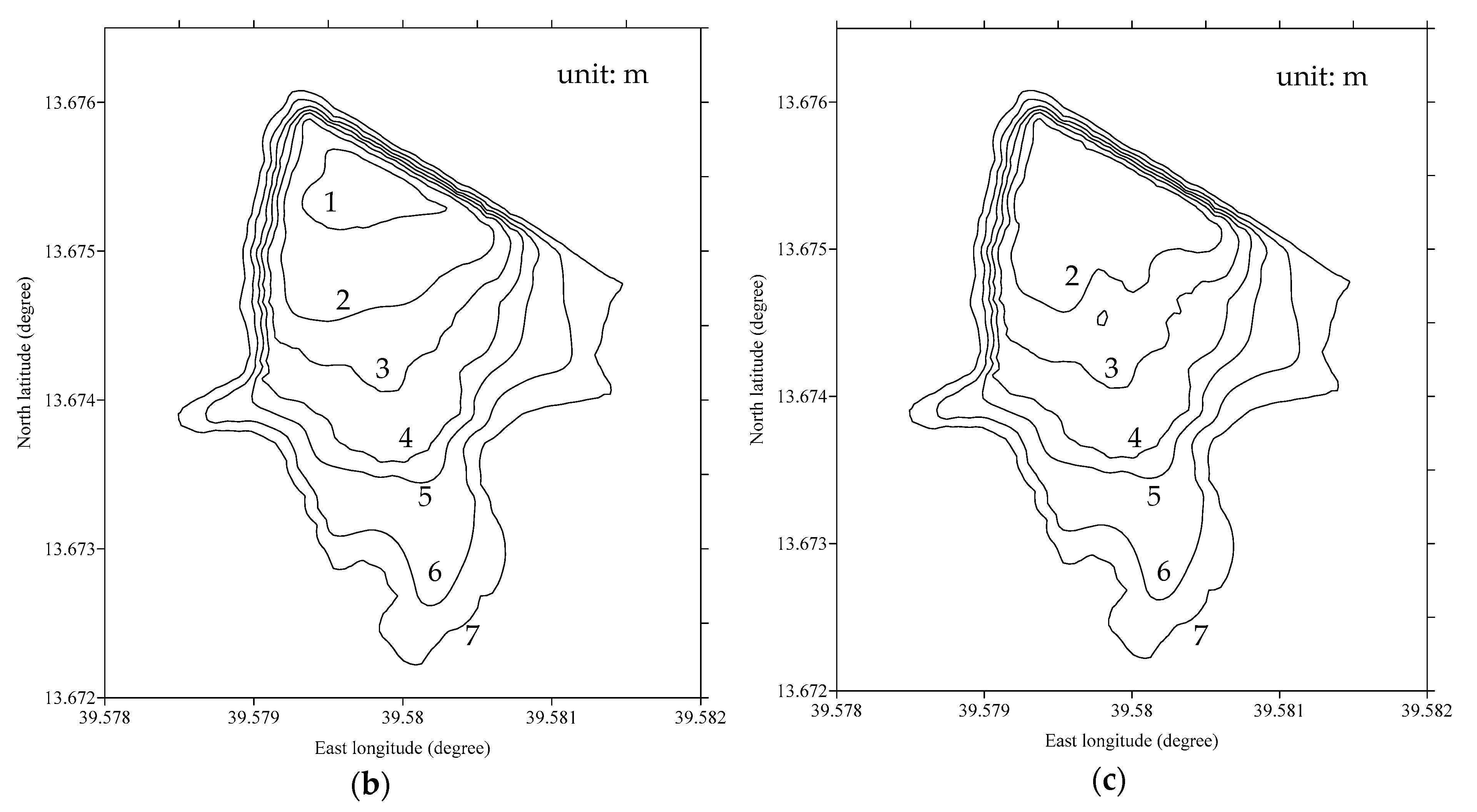
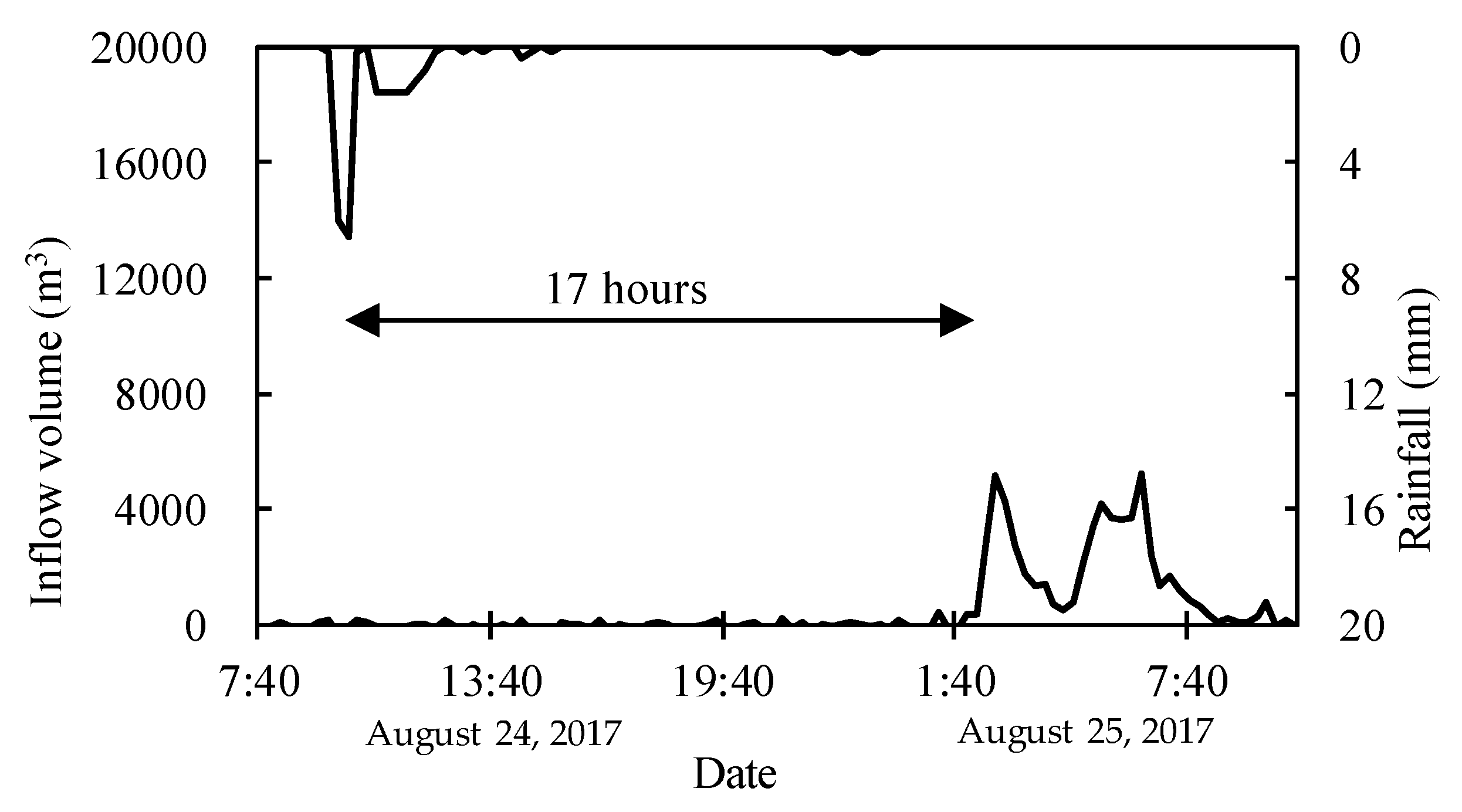
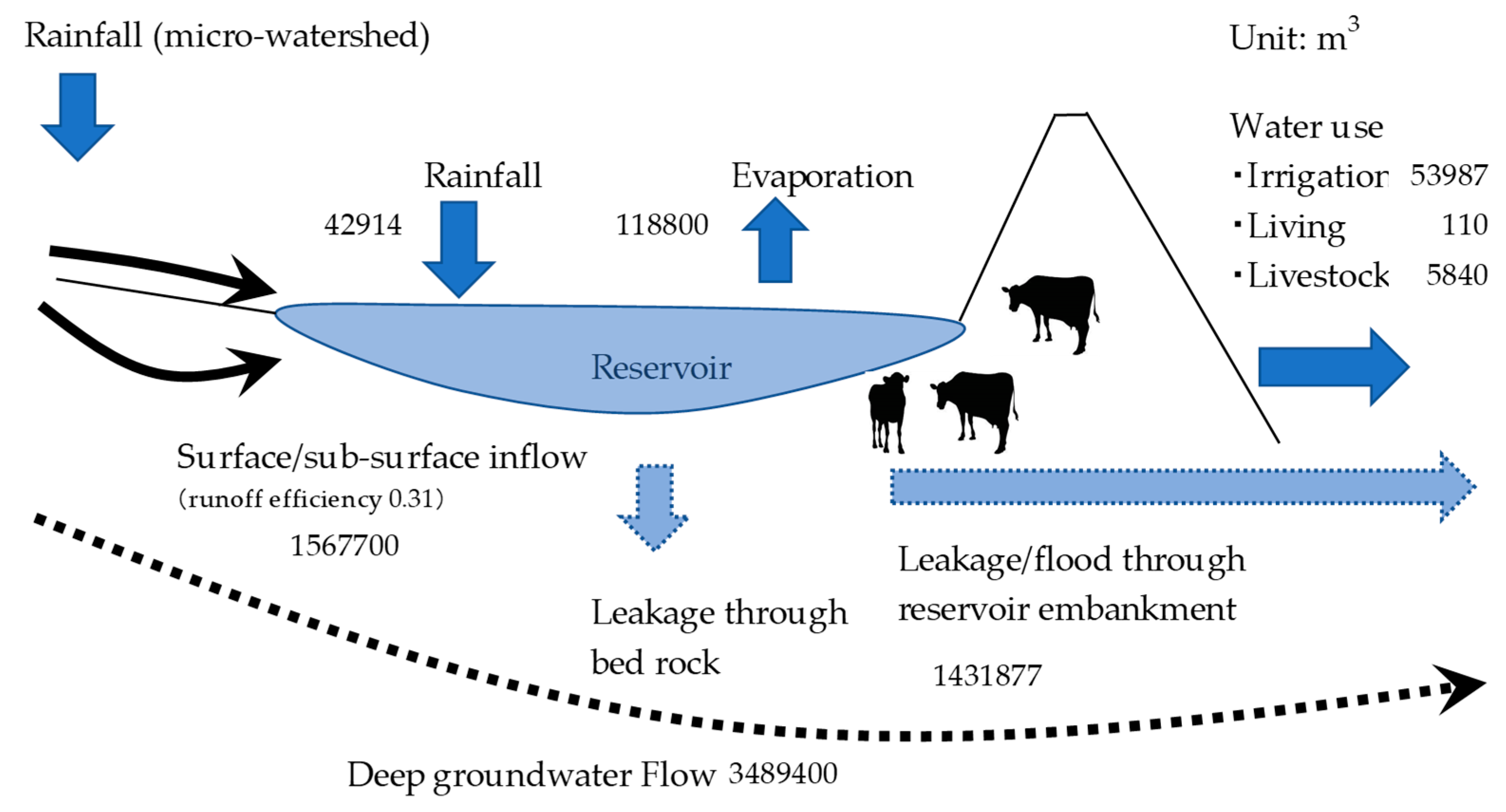
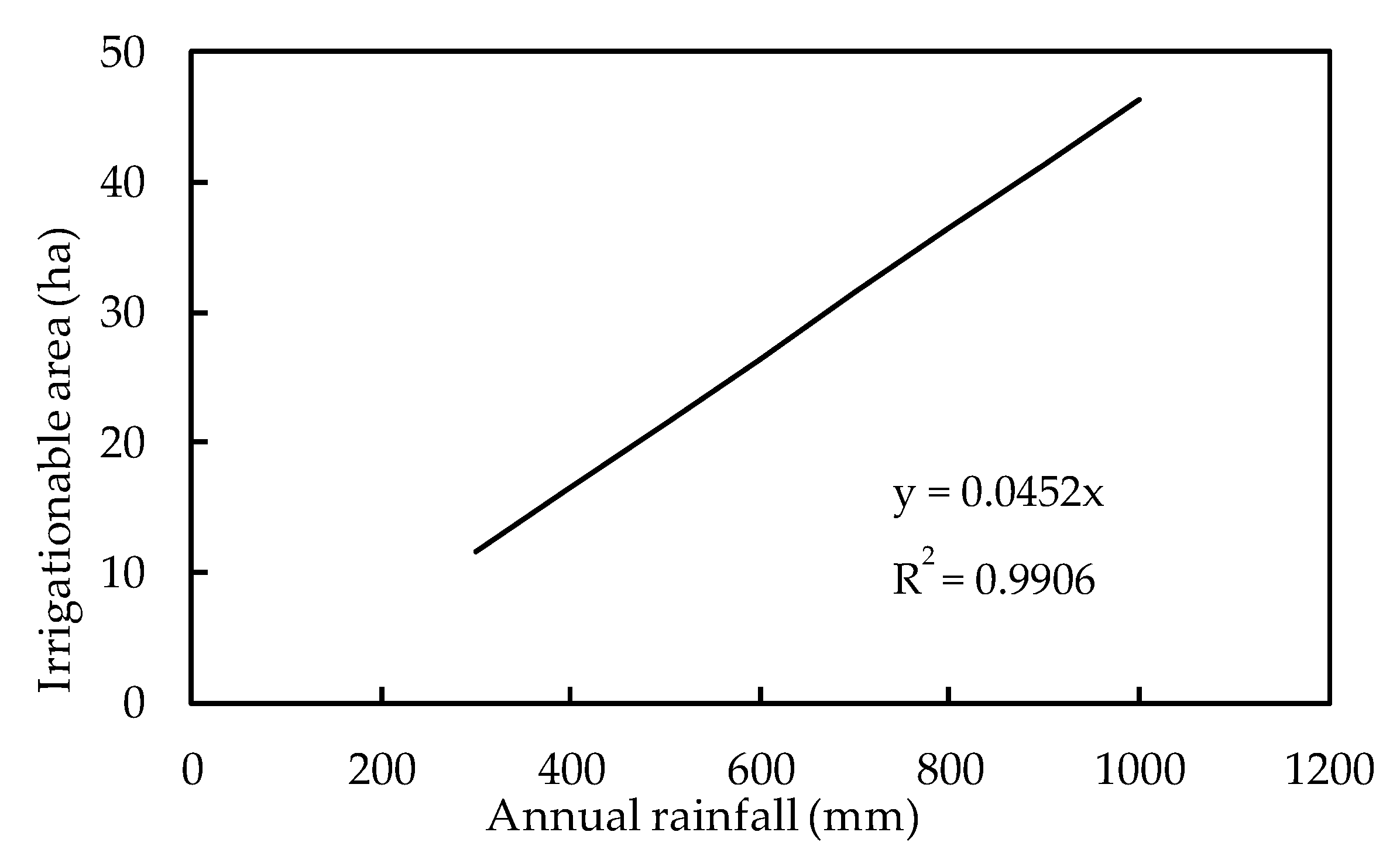
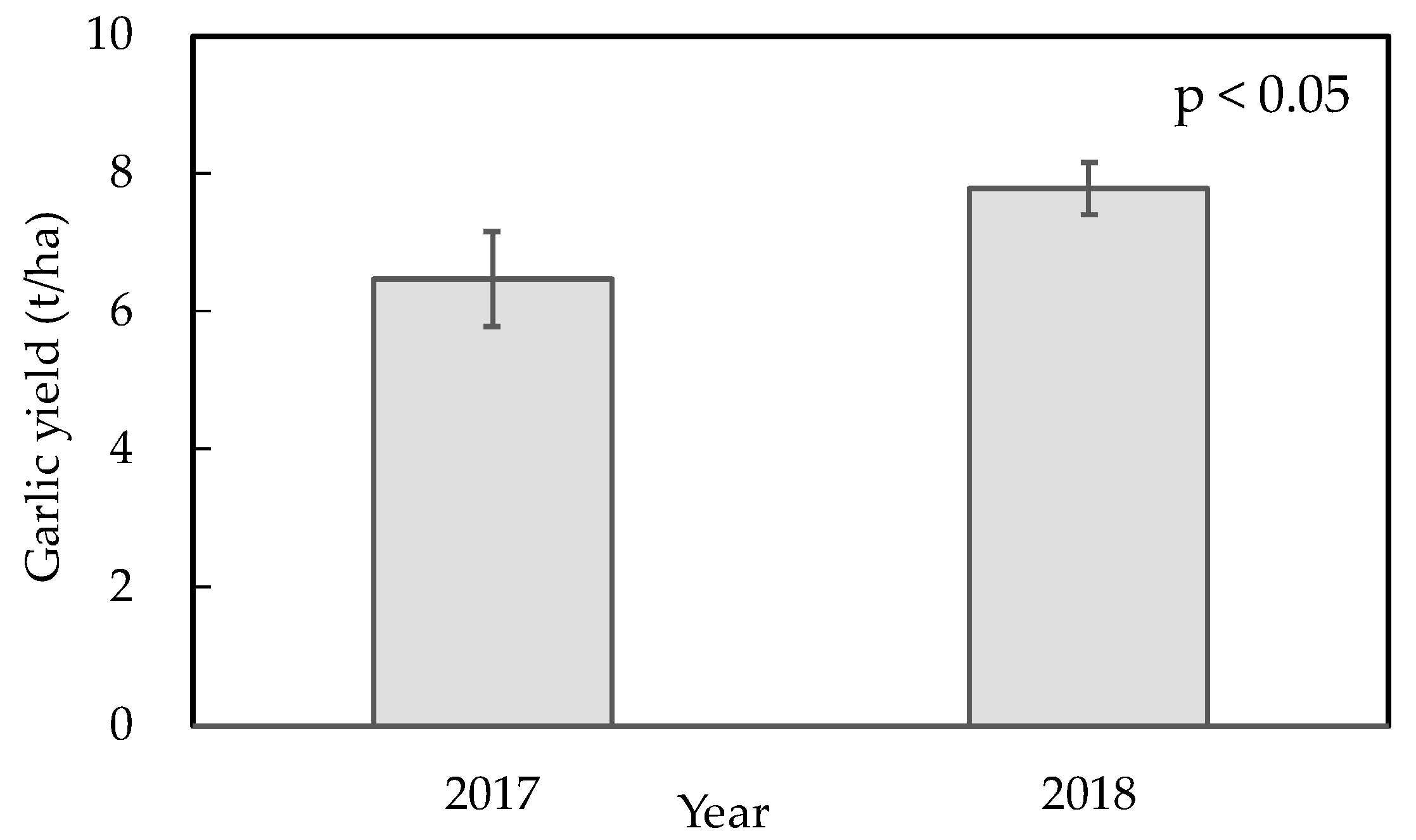
| Items | Bare Land | Sediments |
|---|---|---|
| Sand (g/kg) | 102 | 70 |
| Silt (g/kg) | 501 | 536 |
| Clay (g/kg) | 397 | 394 |
| Bulk Density (g/cm3) | 1.2 | 1.1 |
| Field Capacity (v/v%) | 15 | 28.8 |
| Permanent Wilting Point (v/v%) | 9.2 | 13.3 |
| Available Water Capacity (v/v%) | 5.9 | 15.6 |
| Available Water Capacity (mm/15cm depth) | 8.8 | 23.3 |
| pH (H2O) | 8.1 | 7.3 |
| Organic Carbon (g/kg) | 17.6 | 24.7 |
| Total Nitrogen (g/kg) | 3.4 | 3.3 |
| Available Phosphorus (mg/kg) | 8.8 | 9.2 |
| Exchangeable Potassium (cmol(+)/kg) | 14.1 | 25.0 |
© 2019 by the authors. Licensee MDPI, Basel, Switzerland. This article is an open access article distributed under the terms and conditions of the Creative Commons Attribution (CC BY) license (http://creativecommons.org/licenses/by/4.0/).
Share and Cite
Koda, K.; Girmay, G.; Berihu, T.; Nagumo, F. Reservoir Conservation in a Micro-Watershed in Tigray, Ethiopian Highlands. Sustainability 2019, 11, 2038. https://doi.org/10.3390/su11072038
Koda K, Girmay G, Berihu T, Nagumo F. Reservoir Conservation in a Micro-Watershed in Tigray, Ethiopian Highlands. Sustainability. 2019; 11(7):2038. https://doi.org/10.3390/su11072038
Chicago/Turabian StyleKoda, Kazuhisa, Gebreyohannes Girmay, Tesfay Berihu, and Fujio Nagumo. 2019. "Reservoir Conservation in a Micro-Watershed in Tigray, Ethiopian Highlands" Sustainability 11, no. 7: 2038. https://doi.org/10.3390/su11072038
APA StyleKoda, K., Girmay, G., Berihu, T., & Nagumo, F. (2019). Reservoir Conservation in a Micro-Watershed in Tigray, Ethiopian Highlands. Sustainability, 11(7), 2038. https://doi.org/10.3390/su11072038






